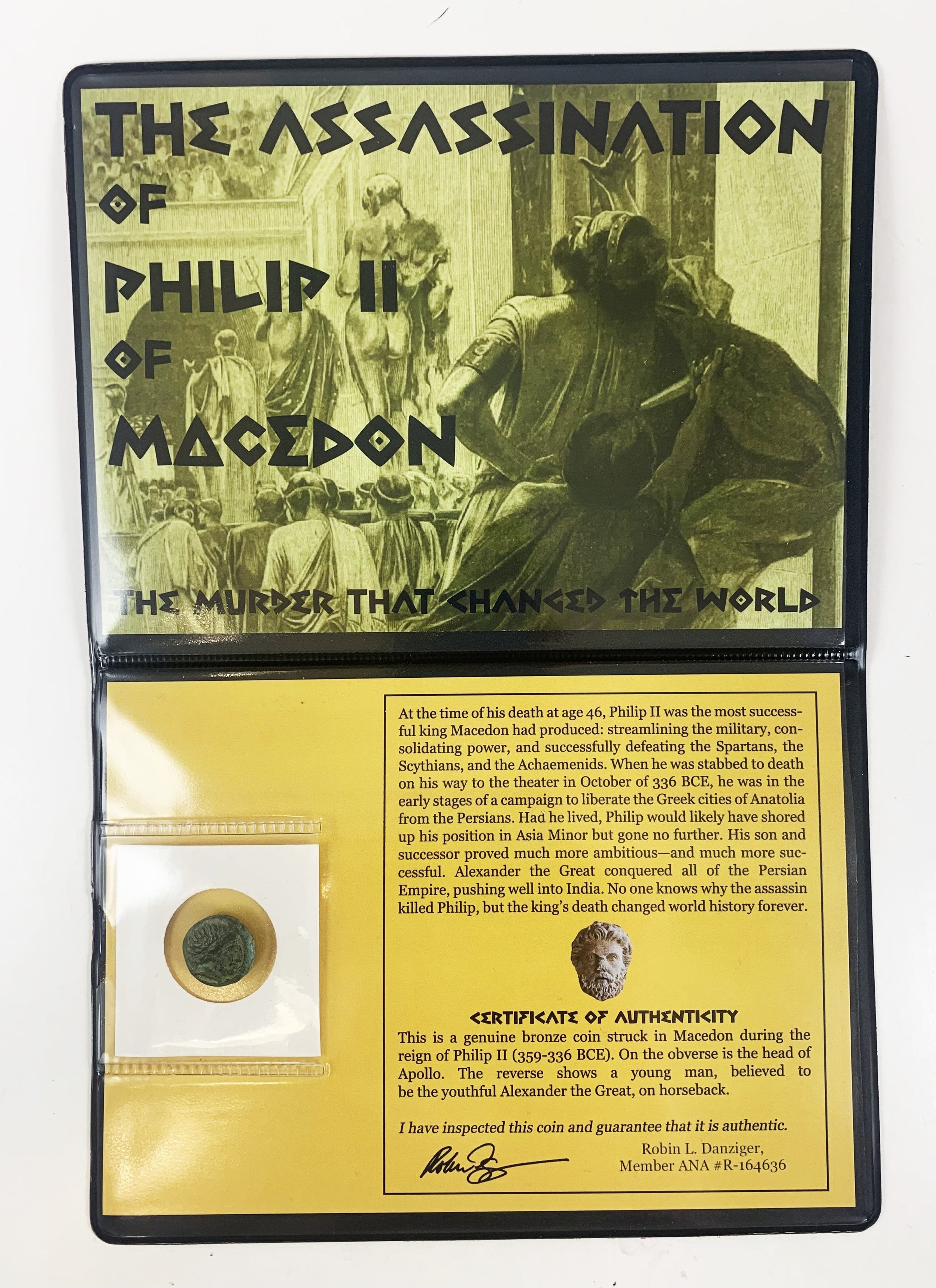Silver Coin of King Demetrios Poliorketes (about 2,315 years old)
Age: Made around 290-289 BC
Origin: From Amphipolis in ancient Macedonia (northern Greece)
Type: Large silver coin (tetradrachm) weighing 17.16 grams, about 30mm across
Design:
Front: The head of King Demetrios Poliorketes with a crown and horn symbols
Back: The god Poseidon standing with one foot on a rock, holding his trident
Historical Note: Demetrios "the Besieger" was one of Alexander the Great's successors
Age: Made around 290-289 BC
Origin: From Amphipolis in ancient Macedonia (northern Greece)
Type: Large silver coin (tetradrachm) weighing 17.16 grams, about 30mm across
Design:
Front: The head of King Demetrios Poliorketes with a crown and horn symbols
Back: The god Poseidon standing with one foot on a rock, holding his trident
Historical Note: Demetrios "the Besieger" was one of Alexander the Great's successors
Age: Made around 290-289 BC
Origin: From Amphipolis in ancient Macedonia (northern Greece)
Type: Large silver coin (tetradrachm) weighing 17.16 grams, about 30mm across
Design:
Front: The head of King Demetrios Poliorketes with a crown and horn symbols
Back: The god Poseidon standing with one foot on a rock, holding his trident
Historical Note: Demetrios "the Besieger" was one of Alexander the Great's successors












